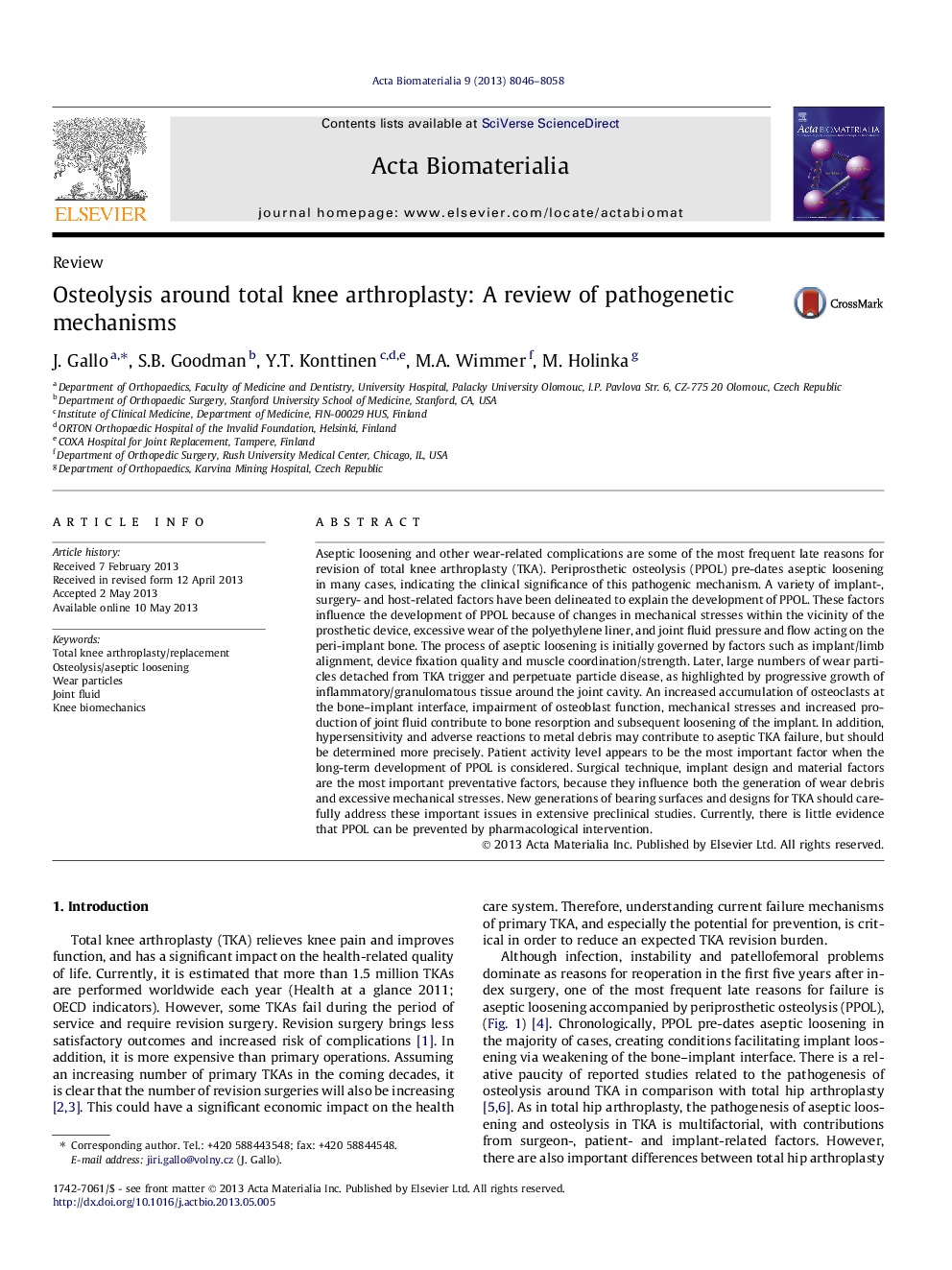| کد مقاله | کد نشریه | سال انتشار | مقاله انگلیسی | نسخه تمام متن |
|---|---|---|---|---|
| 10159764 | 58 | 2013 | 13 صفحه PDF | دانلود رایگان |
عنوان انگلیسی مقاله ISI
Osteolysis around total knee arthroplasty: A review of pathogenetic mechanisms
ترجمه فارسی عنوان
استئوآرتریت در اطراف کل آرتروپلاستی زانو: بررسی مکانیسم های پاتوژنیک
دانلود مقاله + سفارش ترجمه
دانلود مقاله ISI انگلیسی
رایگان برای ایرانیان
کلمات کلیدی
آرتروپلاستی / جایگزین زانو کامل، استئولیز / چسبندگی آسپتیک، ذرات بخرید مایع مشترک، بیومکانیک زانو،
موضوعات مرتبط
مهندسی و علوم پایه
مهندسی شیمی
بیو مهندسی (مهندسی زیستی)
چکیده انگلیسی
Aseptic loosening and other wear-related complications are some of the most frequent late reasons for revision of total knee arthroplasty (TKA). Periprosthetic osteolysis (PPOL) pre-dates aseptic loosening in many cases, indicating the clinical significance of this pathogenic mechanism. A variety of implant-, surgery- and host-related factors have been delineated to explain the development of PPOL. These factors influence the development of PPOL because of changes in mechanical stresses within the vicinity of the prosthetic device, excessive wear of the polyethylene liner, and joint fluid pressure and flow acting on the peri-implant bone. The process of aseptic loosening is initially governed by factors such as implant/limb alignment, device fixation quality and muscle coordination/strength. Later, large numbers of wear particles detached from TKA trigger and perpetuate particle disease, as highlighted by progressive growth of inflammatory/granulomatous tissue around the joint cavity. An increased accumulation of osteoclasts at the bone-implant interface, impairment of osteoblast function, mechanical stresses and increased production of joint fluid contribute to bone resorption and subsequent loosening of the implant. In addition, hypersensitivity and adverse reactions to metal debris may contribute to aseptic TKA failure, but should be determined more precisely. Patient activity level appears to be the most important factor when the long-term development of PPOL is considered. Surgical technique, implant design and material factors are the most important preventative factors, because they influence both the generation of wear debris and excessive mechanical stresses. New generations of bearing surfaces and designs for TKA should carefully address these important issues in extensive preclinical studies. Currently, there is little evidence that PPOL can be prevented by pharmacological intervention.
ناشر
Database: Elsevier - ScienceDirect (ساینس دایرکت)
Journal: Acta Biomaterialia - Volume 9, Issue 9, September 2013, Pages 8046-8058
Journal: Acta Biomaterialia - Volume 9, Issue 9, September 2013, Pages 8046-8058
نویسندگان
J. Gallo, S.B. Goodman, Y.T. Konttinen, M.A. Wimmer, M. Holinka,
